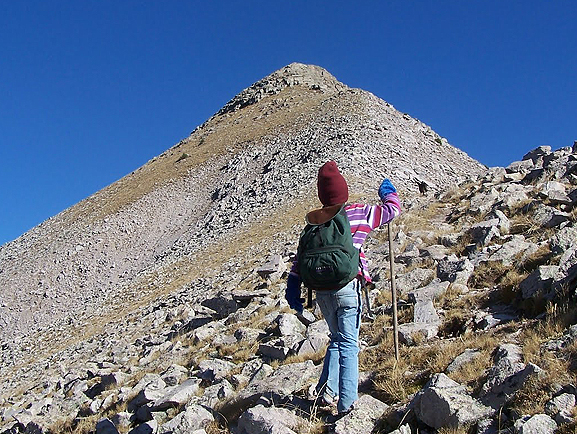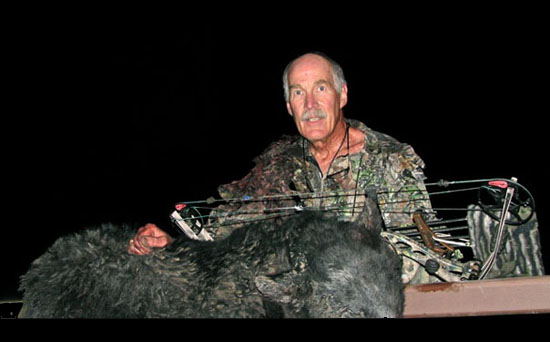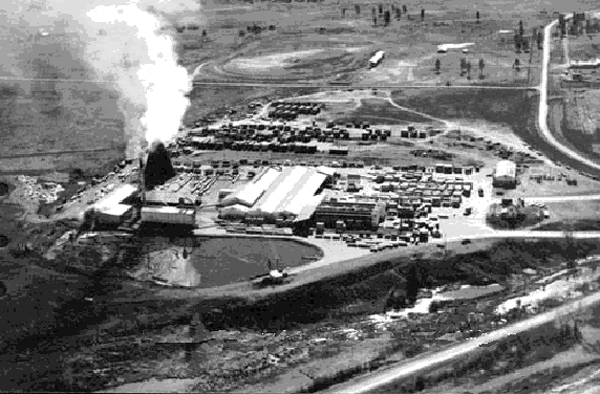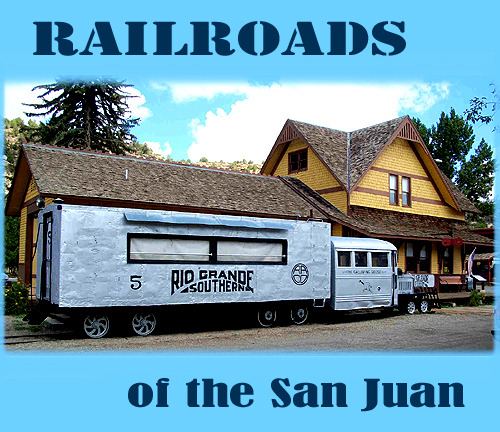The Chaco Phenomenon
by Norm Vance
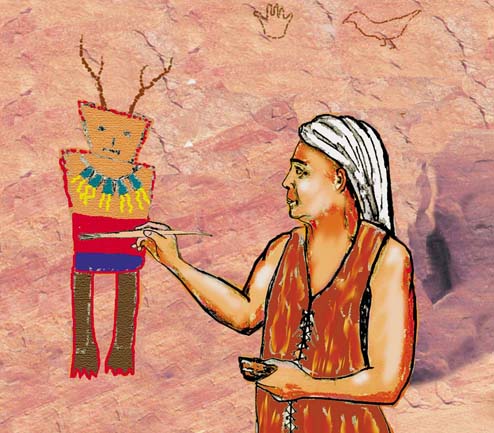 The Anasazi had many high and low points in their history. Generally they developed ever higher technology and knowledge and when good rains allowed good farming, they improved and expanded their culture. At about 900 AD good times culminated in an explosion of activity. This rapid increase in all facets of life, work and culture was so dramatic that scientist term the period a phenomenon. The Webster Dictionary definition of phenomenon that apply here are, “anything that is extremely unusual; an extraordinary occurrence; and having extraordinary qualities”. Archaeologist and anthropologist have long taught that culture was a steady and slow developing process. Recently, newer thinking and research has shown that, at times, changes can happen quickly in a jump forward. The Chaco Phenomenon was an instance of such a rapid jump in culture.
The Anasazi had many high and low points in their history. Generally they developed ever higher technology and knowledge and when good rains allowed good farming, they improved and expanded their culture. At about 900 AD good times culminated in an explosion of activity. This rapid increase in all facets of life, work and culture was so dramatic that scientist term the period a phenomenon. The Webster Dictionary definition of phenomenon that apply here are, “anything that is extremely unusual; an extraordinary occurrence; and having extraordinary qualities”. Archaeologist and anthropologist have long taught that culture was a steady and slow developing process. Recently, newer thinking and research has shown that, at times, changes can happen quickly in a jump forward. The Chaco Phenomenon was an instance of such a rapid jump in culture.
There is a magnificent canyon located in north central New Mexico where this phenomenon occurred and the activity of the Anasazi reached a peak. Named Chaco Canyon, this area had a good river and was at the center of the eastern side of the Anasazi homeland.
The trend of ever larger pueblos reached new highs within the walls of Chaco Canyon, with the construction of multi-level buildings of up to 800 rooms. There were many smaller villages in the area and over a dozen large pueblos. There were special great kivas, ceremonial chambers, built a distance away from the immediate area of the pueblos.
These huge pueblos were built with long range planning. The older style single floor pueblos were simple to build and to enlarge. The major buildings at Chaco Canyon were planned and then under construction for more than two generations. The lower walls had to be built massive in order to support heavy stone walls up to five floors high. It took remarkable planning to locate doors, passageways, kivas and other architectural features.
The best-known pueblo at Chaco Canyon is one the early Spanish named Pueblo Bonito, meaning, the beautiful house. Although Pueblo Bonito receives the most attention, the other giant pueblos in the area just as large and impressive.
These huge buildings required enormous work. Consider the amount of labor involved based on Pueblo Chetro Ketl’s outer wall that is calculated to be composed of 30 million stones. Each stone had to be mined or found, transported, and put into position. Many had to be shaped before being positioned. The method of placing the stones improved at Chaco and all the stone’s surfaces facing out were pecked making dimples so they held the mud adobe covering better.
Anasazi Interstate
So vibrant was the Chaco Phenomenon that the historic trails were no longer acceptable. The Anasazi launched the first and largest road building program by North American Indians. The roads are estimated by scientists to include more than 700 miles of improved surfaces. These roads may have required construction work equal to all pueblo building combined.
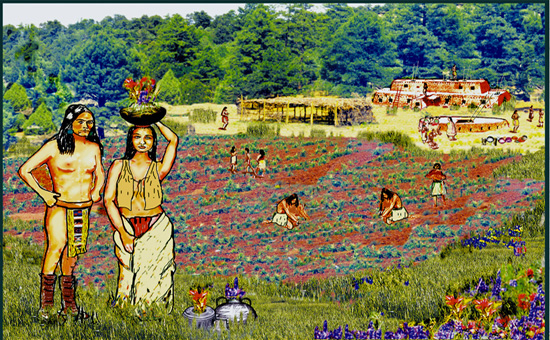 The roads were a marvel of construction and provide more mysteries. They were dug to bedrock twenty to thirty feet wide with stone borders. The Anasazi had no beast of burden or wheeled wagons. Why build a road as large as a modern two lane highway? The roads were built almost perfectly straight going up and over obstacles such as hills and cliffs instead of being built around them. For people who carried food in fragile pottery and heavy logs for roof beams, this type of road design made hard work more difficult. Why?
The roads were a marvel of construction and provide more mysteries. They were dug to bedrock twenty to thirty feet wide with stone borders. The Anasazi had no beast of burden or wheeled wagons. Why build a road as large as a modern two lane highway? The roads were built almost perfectly straight going up and over obstacles such as hills and cliffs instead of being built around them. For people who carried food in fragile pottery and heavy logs for roof beams, this type of road design made hard work more difficult. Why?
Unless there are major discoveries hidden in the soil of New Mexico, we will never know the answers to the mysteries of the Chaco road system.
Anasazi Internet!
Many scientists believe that the Chacoans developed a communication system. Certain towers and mesa or ridge top ruins seem likely placed for receiving and transmitting line of sight messages by smoke signals during the day and interrupted fire light signals at night. The straight roads seem to have been built along the direction of the signal paths.
The messages were likely both utilitarian and ceremonial. Request for food transfer was probably common and information and timing for ceremonial events was passed along. It is also likely that the signal system was used to warn of invading tribes in the area.
It should be noted, again, that within the Anasazi realm not all people adopted to newer culture and technology as fast as others. This held true during the Chaco Phenomenon. It seems likely that tribes, both large and small, maintained certain kinds of independence from each other. Even within Chaco Canyon there were people using the newest of technology while others, within shouting distance, maintained older ways including living in pit houses.
Unanswered Questions
There are many questions about the Chaco Phenomenon still unanswered. The greatest of these is why did it happen at all? The Anasazi had lived for more than a thousand years in an area covering almost 40,000 square miles, seemingly, without the need or desire for one central government or location. Why would they suddenly change course and build what must have been a highly complex system of economy and the government to operate it.
It is generally agreed that Chaco was the center of a trade network allowing food and other items to be exchanged or shared on a vast scale. Perhaps this represents an understanding that it would be better for tribes with excess food to share with tribes who had a period of poor farming than to fight for it.
There is great evidence from Chaco that such trade and sharing existed. Pottery shards from across the Anasazi homeland are found in trash mounds representing hundreds of thousands of pots. Many scientists argue that Chaco may have primarily been a food storage, governmental, and ceremonial center. Some argue that an elite governing class must have developed although there is little evidence other than the massive amount of highly organized work that was accomplished. Others argue that ceremony alone may have been Chaco’s function, that people came by the thousands, bringing food in pots for great celebrations. It is interesting that relatively few burials have been found. This may argue in favor of the notion that a lot of people came to Chaco, but few actually lived there full time. Other scientists calculate that a population of 7,000 lived within the natural walls of the canyon and on nearby mesa tops just above the canyon’s cliffs.
Obviously, there are many views and theories directed at unanswered questions about the Chaco Anasazi. There are as many unanswered questions about why and how the Chaco Phenomenon suddenly ended.
Here we will offer a view for which there is no more evidence than other theories.
The Chaco Canyon area had a light population for centuries. It was probably known as a pleasant area with good soil on the river banks. It was in a good location to act as a center or capitol of the Anasazi country. They probably did not make long range plans for this result. The population grew until the locals and, more important, the people living at a distance realized that the canyon was advancing at a high rate.
The people at a distance wanted to imitate the Chacoans or move in with them. The imitators built large pueblos, called “great houses” by archaeologist. These have been found all around Chaco Canyon, at up to a hundred miles, with roads built to them. These great houses became local centers for large rural farming areas of smaller villages.
The people that did not imitate the Chacoans migrated to the canyon. This swelled the population. The result was a large population that very strongly counted upon each other for life’s requirements. This large population cooperated to build the grand pueblos and the entire Chaco nation built the system of roads.
It is possible that the tribes at a distance had a direct relationship with Chacoans in the canyon. This could have meant that the great pueblos at the canyon were built by outlying tribes to act as a representative of their tribe in the canyon. This might help explain the formation of a government with each tribe represented in the canyon with power in the governing body. It might also explain the few burials found in the canyon as most people want to go to their homeland to die or be buried.
There is a facet of history that may shed light on the Chaco Anasazi. The Indians, for many centuries, harvested a naturally occurring excess. In most parts of this country, the resources the Indians used were in abundance relative to the population. In the arid southwest, the natural resources were more marginal so the people adopted farming to increase the ease of providing a living for the tribe.
In the course of human evolution it is a general truth that when primitive hunters and gatherers begin farming, in an effort to produce an artificial excess, they become more attached to a single – smaller area of land. At some point the land becomes property, which was a radically new way of thinking about land for the Anasazi. Ultimately, people develop systems to protect and govern their land. Protection demands a military to watch over and ward off raiders. Government requires strong leaders and bureaucracy to make and carry out decisions for the people.
From what we know of the earliest Pueblo Indians, they were egalitarians who abhorred ideas of possessiveness, strong leadership, military concepts and an elite class. In all of Anasazi archaeology, there is little evidence of an elite class, rulers or military.
Of interest, it was noted by some of the early Spanish that the Puebloans seemed to put members of the tribe in power who were the least likely candidates. This would be a way of restricting strong leadership.
The Anasazi may well have lived for generations with small scale farming operating smoothly with their philosophy. However, they may have faced real philosophical conflict during the Chaco Phenomenon when the sheer size of the population, density of population, complexity of farming and trade networks, and the need for a military and strong government grew to a level that their traditional systems began to fail. Most of the people of the world ultimately accepted the new conditions, resulting in land ownership, military development, warfare, strong and rich ruling classes ruling over a poorer working class, and other traits associated with modern civilized people.
Whether it was a choice made knowledgeably and all at once or made less consciously with many small decisions, over many years, the Anasazi may have decided not to accept the new ways.
Certainly they had a strong example of what their new culture might become if they continued growing in size and cultural complexity. They were in contact, through long distance trade systems, with the Indians of Mexico. News of the Mexican tribes surely reached the Anasazi. These tribes developed a high level of complexity earlier than the Anasazi and had strong ruling classes, brutal warfare, slavery and religion that required regular human sacrifice. The Aztecs were likely the only more advanced people the Anasazi knew existed. If this was an example of higher civilization, the Anasazi may have opted out.
The Anasazi Depression
The pressures of not being able to cope with their new complex life would have been only one facet of many factors dooming the Chaco Phenomenon. As a culture it seems obvious from the evidence that the Anasazi went into a long depression.
One of these was that, after about 100 years of Chaco cultural development, a drought began which would have strained the farming, food storage and trade systems.
Some scientists argue that the Anasazi may have lost faith in their religious beliefs. A great part of their religion and ceremonials focused on success of the crops and fostering good rains. When the rains diminished and rivers ran dry, the large population suffered and religious doubts may have entered their thoughts. They would have increased the intensity of ceremonials only to see all their efforts go unanswered. This lack of response would have been deeply demoralizing.
There is strong evidence that as the Chaco Phenomenon moved toward the depression there was unrest caused by raiders. These may have been non-Anasazi Indians raiding the Pueblos or, as conditions worsened, intertribal warfare may have occurred. Archaeologists can clearly show that Pueblos originally built with many ground level openings to the outside, had the openings filled with stone so that there was no entry to the pueblo except climbing over high walls. This is a sure sign of defense from the raiders.
We may never know the full truth about the Chaco Phenomenon and its ultimate failure, but we can marvel that for many generations, the Chaco Anasazi developed a vibrant culture that completed great works of architecture, art and culture.


